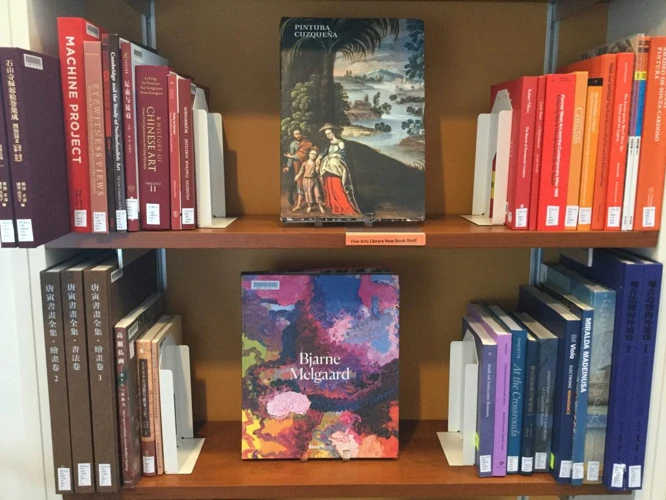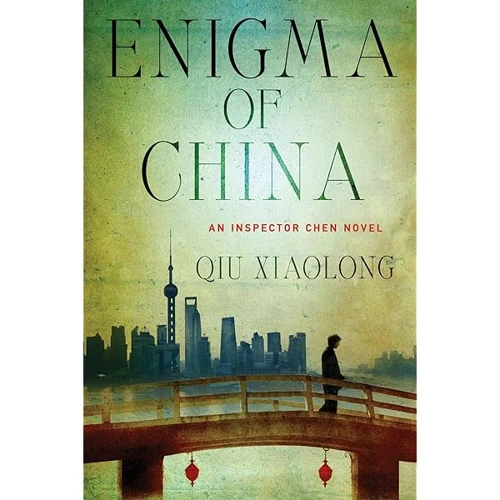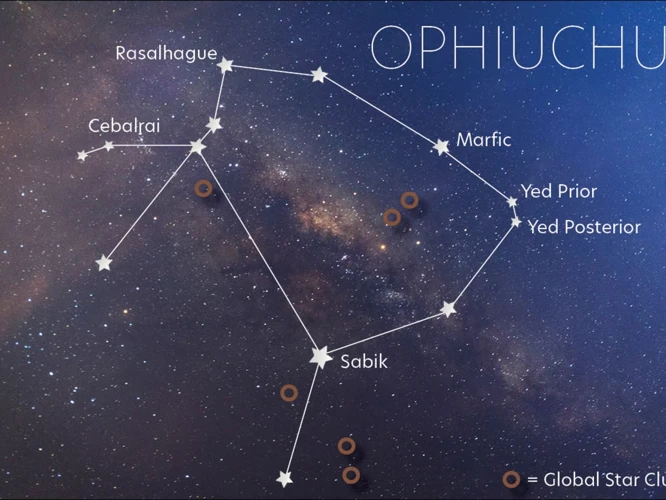Once upon a time, in the realms of Chinese mythology, there existed a captivating tale known as “The Legend of the White Snake.” This mesmerizing story unfolds as a tale of love, betrayal, and redemption, captivating the hearts and minds of generations. From the origins of the white snake to the forbidden love between Bai Suzhen and Xu Xian, and the treacherous actions of Xiaoqing, this article delves into the intricate details of these captivating narratives. Join us on a journey through the rich tapestry of Chinese folklore as we explore the depths of love and betrayal in “The Legend of the White Snake: Love and Betrayal in Chinese Mythology.”
Contents
- The Origin of the White Snake
- The Love Story of Bai Suzhen and Xu Xian
- Xiaoqing: The Tale of Betrayal
- Cultural Significance and Adaptations
- Conclusion
-
Frequently Asked Questions
- 1. Who is the protagonist of “The Legend of the White Snake”?
- 2. What is the significance of the white snake’s transformation into a human?
- 3. Who is Xu Xian?
- 4. What challenges do Bai Suzhen and Xu Xian face in their relationship?
- 5. Who is Xiaoqing?
- 6. What leads Xiaoqing to betray Bai Suzhen?
- 7. What are the consequences of Xiaoqing’s betrayal?
- 8. How does the power of true love play a role in the story?
- 9. Is “The Legend of the White Snake” based on a true story?
- 10. How has “The Legend of the White Snake” been adapted in popular culture?
- References
-
Frequently Asked Questions
- 1. How did the White Snake come into existence?
- 2. Who are Bai Suzhen and Xu Xian?
- 3. What obstacles did Bai Suzhen and Xu Xian face in their relationship?
- 4. How did Bai Suzhen and Xu Xian prove the power of true love?
- 5. Who is Xiaoqing and what role does she play in the story?
- 6. What tempted Xiaoqing to betray Bai Suzhen?
- 7. How did the trust between Bai Suzhen and Xiaoqing unravel?
- 8. What were the consequences of Xiaoqing’s betrayal?
- 9. How has the legend of the White Snake influenced Chinese culture?
- 10. Are there any notable adaptations or retellings of the legend?
- References
- Read More
The Origin of the White Snake

According to Chinese mythology, “The Legend of the White Snake” begins with the origin of the white snake itself. Legend has it that the white snake was originally an immortal snake living in the mystical Emei Mountain. After cultivating herself for centuries, the white snake gained immense spiritual power and transformed into a beautiful woman named Bai Suzhen. Bai Suzhen, along with her close companion Xiaoqing, ventured down the mountain and settled near the West Lake in Hangzhou (source). It is believed that the white snake’s existence is closely tied to the forces of nature, as she draws power from the moon and clouds, symbolizing her ethereal and mystical nature. The origin of the white snake sets the stage for the remarkable love story and subsequent trials that unfold in the myth.
The Love Story of Bai Suzhen and Xu Xian

The love story of Bai Suzhen and Xu Xian is a central theme in “The Legend of the White Snake” (source). Bai Suzhen, in her human form, encounters Xu Xian near the West Lake in Hangzhou. Captivated by her beauty and kind-hearted nature, Xu Xian falls deeply in love with Bai Suzhen, unaware of her true identity as a white snake turned immortal. Their love blossoms, and they soon marry, creating a life of happiness together. However, their love is forbidden by the divine realm due to the difference in their species. The Forbidden Love between a human and an immortal snake becomes a poignant theme in the story, mirroring the struggle faced by star-crossed lovers throughout time. Despite the challenges that await them, Bai Suzhen and Xu Xian remain dedicated to their love, ultimately showcasing the power and resilience of true love in the face of adversity.
A Forbidden Love
In “The Legend of the White Snake,” the love between Bai Suzhen, the transformed white snake, and Xu Xian, a mortal man, is an epitome of forbidden love. Their paths intertwine when Xu Xian saves Bai Suzhen from a sudden rainstorm, and they eventually fall deeply in love (source). However, their love is deemed forbidden as it defies the boundaries between the immortal realm and the mortal world. The gods and heavenly forces look down upon their relationship, viewing it as a disruption to the natural order of things. The forbidden nature of their love brings numerous challenges and obstacles to the couple’s path towards happiness, igniting a turbulent journey filled with sacrifices and tests of their devotion. Their love becomes a poignant representation of the power of love itself, transcending societal norms and expectations. Bai Suzhen and Xu Xian’s forbidden love captures the hearts of audiences worldwide and serves as a reminder of the depth and complexity of human emotions.
Trials and Tribulations
In the enchanting tale of “The Legend of the White Snake,” the love between Bai Suzhen and Xu Xian faces numerous trials and tribulations. One of the greatest challenges they encounter is the disapproval and interference from the powerful Buddhist monk, Fahai. Recognizing Bai Suzhen as a powerful and dangerous spirit, Fahai seeks to separate the couple and maintain order. He uses his divine powers to capture Xu Xian and tries to persuade him to abandon Bai Suzhen, warning him of the dangers that her true form poses (source). Despite the trials they face, their love for one another remains steadfast. Bai Suzhen risks her life and even sets her true form, the white snake, free in her attempt to rescue Xu Xian. This act of sacrifice and unwavering love demonstrates the power of their bond and emphasizes the theme of true love prevailing even in the face of adversity. The trials and tribulations that Bai Suzhen and Xu Xian endure test the strength of their love and serve to showcase the profound and enduring nature of their relationship.
The Power of True Love
In “The Legend of the White Snake,” the power of true love serves as a central theme that drives the narrative forward. Despite the many trials and tribulations that Bai Suzhen and Xu Xian face, their unwavering love for each other prevails (source). Their love is depicted as pure, selfless, and unbreakable, transcending societal norms and defying the boundaries between human and spirit. Their bond becomes a source of strength, enabling them to overcome seemingly insurmountable obstacles. One instance of this power is when Bai Suzhen, in her serpent form, risks her life to save Xu Xian during a flood (source). This act of sacrifice showcases the depth of her love and the extraordinary lengths she is willing to go for her beloved. The power of true love is also exemplified by Xu Xian’s unyielding faith in Bai Suzhen, even when others question her true nature (source). Despite the betrayal and deception they face, their love remains constant and unwavering, ultimately leading to their reunion and eventual redemption. The power of true love in “The Legend of the White Snake” serves as a reminder of the strength and transformative nature of love, transcending boundaries and conquering all obstacles in its path.
Xiaoqing: The Tale of Betrayal

In the captivating saga of “The Legend of the White Snake,” the character of Xiaoqing emerges as a tale of betrayal, weaving a complex web of deception. Xiaoqing, the loyal companion of Bai Suzhen, possesses a deeply ambitious nature that ultimately leads her down a treacherous path. Tempted by the desire for power and recognition, she succumbs to her inner demons and plots against her dear friend. With cunning manipulation and deceit, Xiaoqing strives to supplant Bai Suzhen and claim her rightful place as the primary love interest of Xu Xian. However, her actions unravel trust and sow the seeds of despair, both for herself and those around her. Xiaoqing’s tale serves as a cautionary reminder of the destructive consequences that can arise from unchecked ambition and the bitter fruits of betrayal.
The Temptation of Power
In the captivating tale of “The Legend of the White Snake,” the character of Xiaoqing becomes entangled in a web of temptation and power. Xiaoqing, a green snake spirit who accompanies Bai Suzhen, is initially portrayed as a loyal and devoted friend. However, as the story progresses, Xiaoqing becomes consumed by jealousy and an insatiable desire for power. She becomes enticed by the allure of dark magic and seeks to acquire the Forbidden Arts to elevate her own status (source).
Driven by her thirst for power, Xiaoqing encounters Fa Hai, a powerful Buddhist monk known for his wisdom and ability to vanquish evil spirits. Fa Hai manipulates and exploits Xiaoqing’s desires, convincing her that by betraying Bai Suzhen and Xu Xian, she will gain the strength and authority she craves. Xiaoqing succumbs to the temptation, ultimately leading to great turmoil and tragic consequences.
The temptation of power serves as a cautionary tale, illustrating the destructive consequences that arise from succumbing to greed and ambition. Through Xiaoqing’s actions, the story highlights the corrupting influence of power and the importance of staying true to one’s values and friendships. It serves as a reminder that true strength lies not in seeking power, but in nurturing genuine connections and embodying compassion and loyalty.
The Unraveling of Trust
In the intricate tale of “The Legend of the White Snake,” the theme of trust plays a pivotal role, especially in the segment known as “The Unraveling of Trust.” Xu Xian, unaware of Bai Suzhen’s true identity as a white snake, begins to doubt his wife’s intentions when he learns of her extraordinary powers. The once blissful relationship is tainted by suspicion as Xu Xian falls prey to the clever schemes of Fahai, a Buddhist monk determined to separate the couple (source). As doubts and mistrust grow, Xu Xian unknowingly consumes a magical pill given to him by Fahai, which reveals the true form of Bai Suzhen. Shocked and filled with fear, Xu Xian confronts Bai Suzhen, shattering the trust they once shared. This heartbreaking moment marks a turning point in their relationship and sets the stage for the subsequent trials they must face. The unraveling of trust highlights the fragility of relationships, showing how doubt and suspicion can chip away at even the strongest bonds of love and ultimately lead to devastating consequences.
Consequences and Redemption
The tale of “The Legend of the White Snake” is filled with consequences and redemption, as the characters navigate the aftermath of their actions. After Xiaoqing’s betrayal, Bai Suzhen is captured and imprisoned beneath the Thunder Pagoda, where she suffers greatly. Xu Xian, heartbroken and deceived, discovers the truth about his wife’s true identity and the magnitude of her love for him. Consumed by remorse, he embarks on a perilous journey to free Bai Suzhen from her captivity. With the help of a powerful monk named Fahai, Xu Xian manages to release Bai Suzhen from her prison, but not without facing a series of trials and obstacles thrown by Fahai (source). As the story reaches its climax, Bai Suzhen and Xiaoqing confront Fahai, leading to a fierce battle between good and evil. Ultimately, Bai Suzhen’s pure and selfless love for Xu Xian prevails, and she is granted a chance for redemption. With her newfound compassion and enlightenment, Bai Suzhen and Xu Xian are reunited, their love enduring the trials they faced. The consequences of betrayal are met with redemption, reinforcing the power of forgiveness and unconditional love within the narrative of “The Legend of the White Snake.”
Cultural Significance and Adaptations

The tale of “The Legend of the White Snake” holds immense cultural significance in Chinese mythology and has been adapted and reimagined in various art forms throughout history. This captivating story has permeated Chinese literature, theater, opera, and film, leaving an indelible mark on the country’s cultural landscape. The enduring popularity of the white snake legend is a testament to its universal themes of love, loyalty, and sacrifice. In Chinese culture, the white snake is often associated with benevolence, fertility, and protection against evil spirits. The story’s adaptability is evident in its countless variations and interpretations, showcasing the creativity and imagination of different artists and storytellers. For instance, the story has been reimagined in the form of Peking Opera, ballets, and even modern television dramas (source). Each adaptation brings its own unique artistic flair while staying true to the essence of the original tale. The enduring cultural significance and adaptations of “The Legend of the White Snake” serve as a testament to the power and universal appeal of this endearing myth.
Conclusion

In conclusion, “The Legend of the White Snake” stands as an enduring tale of love, betrayal, and redemption in Chinese mythology. This captivating story has captivated audiences for centuries, transcending time and culture. The forbidden love between Bai Suzhen and Xu Xian serves as a powerful testament to the strength of true love, even in the face of adversity. The treacherous actions of Xiaoqing highlight the consequences of succumbing to temptation and the unraveling of trust. The tale not only explores the depths of human emotions but also delves into the complexities of morality and the power of forgiveness. Through its various adaptations in literature, theater, and film, “The Legend of the White Snake” continues to be a beloved tale, resonating with audiences around the world. Ultimately, this myth reminds us of the enduring power of love, the consequences of betrayal, and the potential for redemption in the face of past mistakes.
Frequently Asked Questions

1. Who is the protagonist of “The Legend of the White Snake”?
The main protagonist of “The Legend of the White Snake” is Bai Suzhen, who is transformed from an immortal white snake into a beautiful woman.
2. What is the significance of the white snake’s transformation into a human?
The white snake’s transformation into a human symbolizes her desire to experience love and establish a deep connection with a mortal, ultimately leading to her forbidden romance.
3. Who is Xu Xian?
Xu Xian is the mortal man who falls in love with Bai Suzhen and becomes the object of her affection. He is a kind and generous individual who unknowingly becomes entangled in the supernatural world.
4. What challenges do Bai Suzhen and Xu Xian face in their relationship?
Bai Suzhen and Xu Xian face numerous challenges, including societal disapproval, the interference of powerful deities, and the relentless pursuit of a monk named Fa Hai who seeks to separate them.
5. Who is Xiaoqing?
Xiaoqing is a green snake who is a close companion and friend of Bai Suzhen. However, she becomes consumed by jealousy and succumbs to betrayal, becoming a significant antagonist in the story.
6. What leads Xiaoqing to betray Bai Suzhen?
Xiaoqing’s desire for power and her envy of Bai Suzhen’s love for Xu Xian ultimately lead her down a path of betrayal and treachery.
7. What are the consequences of Xiaoqing’s betrayal?
Xiaoqing’s betrayal leads to a series of tragic events, causing anguish and separation among the characters. It ultimately results in her own downfall and the need for redemption.
8. How does the power of true love play a role in the story?
The power of true love is a central theme in “The Legend of the White Snake.” It is this pure and unwavering love between Bai Suzhen and Xu Xian that helps them overcome numerous obstacles and ultimately triumph over adversity.
9. Is “The Legend of the White Snake” based on a true story?
“The Legend of the White Snake” is not based on a true story but is a popular mythical tale in Chinese culture that has been passed down through generations.
10. How has “The Legend of the White Snake” been adapted in popular culture?
Over the years, “The Legend of the White Snake” has been adapted in various forms, including operas, films, TV dramas, and literature, both in China and internationally. It continues to inspire creative interpretations and adaptations, keeping the legend alive.
References
Frequently Asked Questions

1. How did the White Snake come into existence?
The legend of the White Snake tells that the White Snake originated from a magical stone that absorbed centuries of spiritual energy, eventually taking the form of a snake spirit.
2. Who are Bai Suzhen and Xu Xian?
Bai Suzhen and Xu Xian are the central characters of the legend. Bai Suzhen is the White Snake spirit who transforms into a beautiful woman, and Xu Xian is a kind-hearted young scholar whom she falls in love with.
3. What obstacles did Bai Suzhen and Xu Xian face in their relationship?
Bai Suzhen and Xu Xian faced various obstacles, including societal disapproval of their forbidden love and the interference of a Buddhist monk who saw the White Snake as a threat to humans.
4. How did Bai Suzhen and Xu Xian prove the power of true love?
Despite the challenges they faced, Bai Suzhen and Xu Xian remained devoted to each other. Their unwavering love and sacrifices eventually won the support of the gods and the acceptance of society, proving the strength of their bond.
5. Who is Xiaoqing and what role does she play in the story?
Xiaoqing is Bai Suzhen’s faithful companion, who initially supports her sister’s love for Xu Xian. However, driven by jealousy and the desire for power, Xiaoqing ultimately betrays her sister, leading to tragic consequences.
6. What tempted Xiaoqing to betray Bai Suzhen?
Xiaoqing’s betrayal was driven by the allure of power. She became enchanted by a magical artifact that promised to grant her great strength, leading her to act against her sister’s best interests.
7. How did the trust between Bai Suzhen and Xiaoqing unravel?
The trust between Bai Suzhen and Xiaoqing unraveled as Xiaoqing fell deeper into the darkness of her desires. Her actions began to harm those around her, causing Bai Suzhen to question her sister’s loyalty and true intentions.
8. What were the consequences of Xiaoqing’s betrayal?
Xiaoqing’s betrayal led to a series of tragic events, including the death of Xu Xian and Bai Suzhen’s imprisonment. These events served as a lesson about the destructive nature of betrayal and the importance of trust.
9. How has the legend of the White Snake influenced Chinese culture?
The legend of the White Snake has had a significant influence on Chinese culture, inspiring various adaptations in literature, theater, and film. It has become a symbol of enduring love and a cautionary tale about the consequences of betrayal.
10. Are there any notable adaptations or retellings of the legend?
Yes, the legend of the White Snake has been adapted into numerous plays, operas, movies, and TV series. Notable adaptations include the famous Chinese opera “The Legend of the White Snake” and the 2011 film “The Sorcerer and the White Snake” starring Jet Li.







